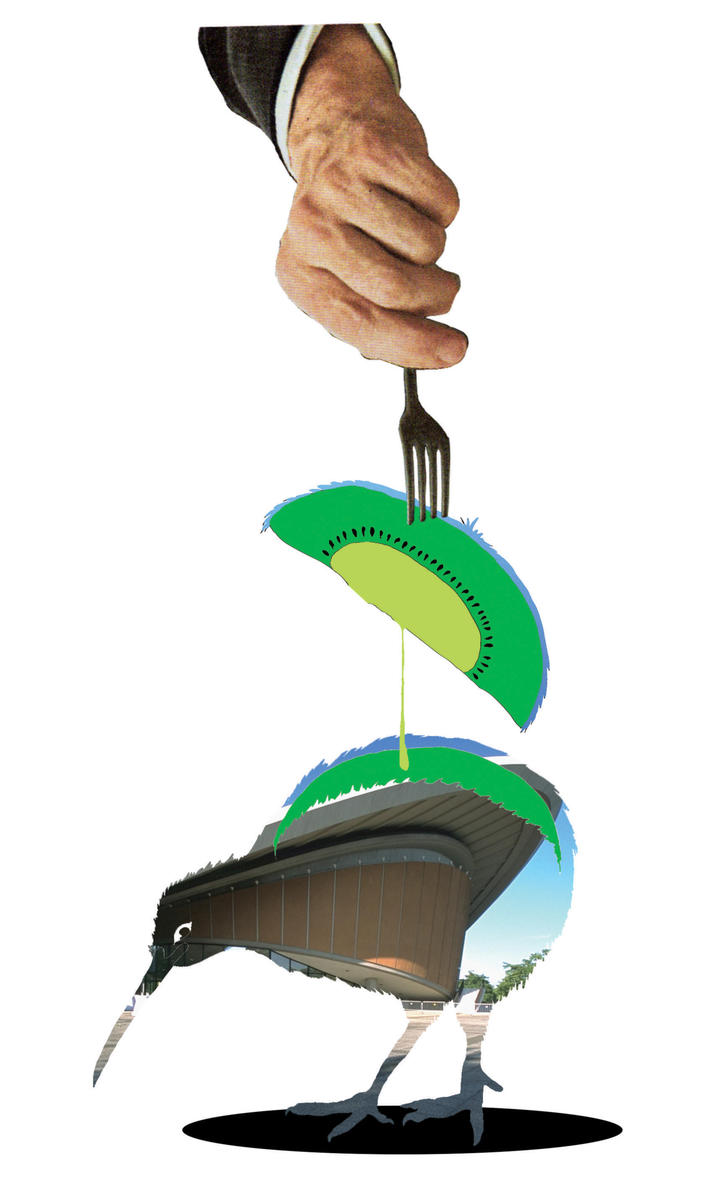
The name says it all, really. Take a moment to savor it, as it rolls word by word off your tongue. The. House. Of. World. Cultures. Like sweet fruit, faintly exotic, yet familiar — a kiwi perhaps, whole and unpeeled. The skin’s furry surface tickles the roof of your mouth. It’s too much to swallow.
In a nutshell, the state-funded House of World Cultures is the reversal of the Goethe Institut. If the latter’s mission is to bring German Culture to the World, the HWC’s is to bring the World to Germany, in the form of art exhibitions, theater, literature, music, dance, and more. The way the program is currently framed, the HWC transforms every visiting performer, speaker, and even curator into, well, not just a semi-exotic kiwi, sweet, soft, and hairy, but into a demonstration of Globalisierung or, more precisely, a flattering manifestation of German hospitality. The HWC team is well aware of this, and regularly engages in flurries of auto-deconstructive new institutionalism, sparking debates, both public and internal, that are often very rewarding. Fraught issues are broached, such as Germany’s approach to its colonial past and the entwinement of that past with Nazism, reminding one of the magnitude of the issues at stake.
But these discussions rarely, if ever, move beyond the self-critique, as there is always, alas, a financial, political, ideological, administrative, logistical, or strategic hindrance blocking the road to renewal. The shows, concerts, readings, and panels can be as well researched and interesting as you please — but their architects continue to transfigure the material into tokens, samples, and specimens. The visual arts sector, under the dexterous Shaheen Merali, is a notable example of curatorial intelligence thwarted by context. Guest curatorial interventions, meanwhile, are rendered a painful ordeal by the sheer indifference and bureaucratic incommunicado that reign.
Now as the burgeoning art world discussion of new institutionalism suggests, institutional self-critique may be a dangerous contradiction in terms. Critique from outside, some claim, is preempted in a manner that renders it yet another kiwi, cute and harmless, with cultural directors skillfully upgrading their venues with so much user-friendly critical veneer, you can no longer tell the forest from the trees.
But I beg to differ. On the one hand, the few institutions that systematically and rigorously deconstruct the trappings of their success and authority, such as the one-time Kunstverein München under Maria Lind, or the Van Abbemuseum in Eindhoven under Charles Esche, have simply produced outstanding projects and exhibitions, tout court. To my knowledge, tales of sociopolitical castration have yet to surface. On the other hand, the phenomenon is far from common. The overwhelming majority of institutions regard self-reflection as narcissistic, irrelevant, or simply unmarketable.
Allow me, at this stage, to clarify something by way of an anecdote. Just last month, I attended a Rotterdam conference on “new audiences” featuring, among other speakers, the suave European curator of a cutting-edge art space in East Asia. His epistemics were ethnographic, his jokes were borderline racist, his agenda was a classic example of unrepentant art world expansionism. But it was deeply, self-ironically sexy and pleasant and, above all, cosmopolitan, which is more than most conference contributions can boast. So it passed. It was even something of what you call a highlight.
That item on the program was followed by a conversation between myself and a young cultural journalist recently appointed director of a top-down post-Theo-van-Gogh multicultural initiative. Her discourse was well intentioned, politically simplistic, and, above all, redemptive. To state the obvious, she was all but lynched after the talk by an audience hungry to flaunt its unflagging suspicion toward old-school cultural diversity.
In light of such double standards, I invite you to ponder which standard-bearer your own favorite cross-continental initiative chooses: those who can mask their agendas with irony and gloss, or those whose earnestness makes them look worse than they are? Anyone who denies the role of, say, the Cold War in modern art history, or the abundance of career opportunities in the Middle East today, is horribly dishonest. Personally, I see a lot of merit in what I call “terminological Birkenstocks.” Even if painful to contemplate, at least they’re not out to fool anyone. Art never “stands for itself,” and it’s naive to think the more cutting-edge venues can uphold autonomy beyond agenda. The problem faced by the HWC, in other words, is one of degree and packaging, not of fundamentals.
It’s a problem compounded by the fact that, breathtaking as its high modernist architecture may be, the venue’s isolation, nestled within Berlin’s largest park, right by the federal chancellor’s office, doesn’t do it any favors. The ghettoized, Freak-Magnet potential of the HWC became clear to me personally when exhibiting an installation at a show on “Iranian art,” early in 2004, as a member of the Shahrzad collective. We replicated there a glass display case from the Khomeini Museum, Tehran, featuring the man’s personal belongings, including slippers, documents, and a bottle of Chloë by Karl Lagerfeld.
Though intended as a jab at the tokenism of the exhibition, it was perceived as a celebration of Khomeini by many among the leftist intelligentsia in exile, which prompted petitions, demonstrations, sabotage, and all sorts of aromatic conspiracy theories. How many contemporary artists can garner as much dramatic attention? But tensions, of course, can only run so high when the material is framed accordingly, which is, I assume, the reason why the HWC has a clear raison d'être and is spawning ever more replications, in Holland and elsewhere. Even though they were virtually unknown in the Eighties, you now find kiwis in every supermarket.